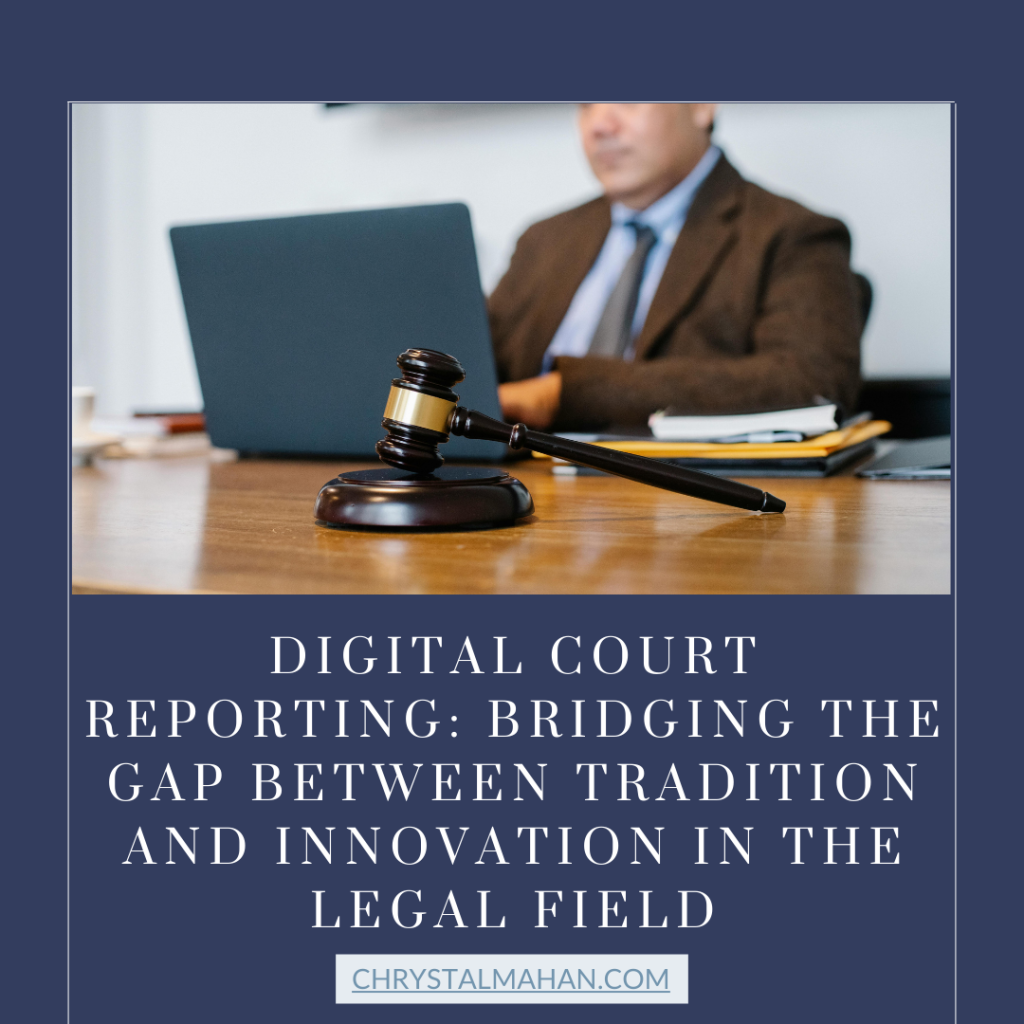
The legal field, known for its reliance on tradition and precedent, is undergoing a significant transformation. At the forefront of this change is digital court reporting. This innovation is bridging the gap between the conventional methods of capturing court proceedings and the modern demands for efficiency, accuracy, and accessibility. Digital court reporting is a technological upgrade and a fundamental shift in the legal industry’s operations.
The Evolution of Court Reporting
Court reporting has a long history dating back to ancient times when scribes manually recorded proceedings. Over the centuries, this evolved into stenography, a method that allowed court reporters to capture speech at speeds exceeding 200 words per minute using a stenotype machine. This method has been the gold standard for decades, ensuring verbatim transcripts of legal proceedings.
However, the limitations of traditional stenography have become increasingly apparent. Stenographers require extensive training and are in short supply, leading to delays and increased costs in the legal process. Additionally, the manual transcription process is time-consuming and prone to human error. These challenges have paved the way for digital court reporting, which leverages advanced technology to streamline and enhance the accuracy of court transcripts.
The Technology Behind Digital Court Reporting
Digital court reporting utilizes high-quality audio recording equipment, speech recognition software, and digital transcription tools to capture and transcribe court proceedings. This technology ensures that every word spoken in the courtroom is recorded precisely. The audio files are then processed by sophisticated algorithms that convert speech to text, creating accurate and searchable transcripts.
One key advantage of digital court reporting is its ability to provide real-time transcription. With real-time reporting, judges, attorneys, and other stakeholders can access live transcripts as the proceedings unfold. This capability enhances the efficiency of the judicial process and supports better decision-making by providing immediate access to critical information.
Another significant benefit is the ease of storage and retrieval. Digital transcripts can be stored electronically, allowing for quick access and sharing. This is particularly useful in complex cases involving numerous documents and lengthy proceedings. The digital format also supports integration with other legal technologies, such as case management systems and electronic discovery platforms.
Benefits and Challenges of Digital Court Reporting
The shift to digital court reporting offers numerous benefits. Firstly, it addresses the shortage of skilled stenographers by reducing the dependency on manual transcription. This helps mitigate delays and lowers the costs of hiring and training stenographers. Secondly, digital reporting enhances accuracy by minimizing human errors during manual transcription. The use of advanced software ensures that transcripts are reliable and precise.
Moreover, digital court reporting is more accessible. It enables remote reporting, allowing court reporters to work from any location. This flexibility is particularly valuable in today’s globalized legal environment, where proceedings may involve participants worldwide. Remote capabilities also prove essential during unforeseen circumstances, such as the COVID-19 pandemic, which has necessitated virtual court sessions.
Despite these advantages, digital court reporting has its challenges. The initial setup costs for high-quality recording equipment and transcription software can be significant. A learning curve is also associated with adopting new technologies for court reporters and legal professionals. Ensuring the security and confidentiality of digital transcripts is another critical concern, given the sensitive nature of legal proceedings.
The Future of Digital Court Reporting
The future of digital court reporting is bright, with ongoing advancements poised to revolutionize the field further. Artificial intelligence (AI) and machine learning are expected to play an increasingly significant role in enhancing the capabilities of speech recognition software. These technologies will improve the accuracy and efficiency of transcriptions, even in noisy environments or with speakers with strong accents.
Additionally, integrating digital court reporting with other legal technologies will continue to grow. For example, AI-driven analytics can be used to identify patterns and trends in court transcripts, providing valuable insights for legal professionals. Virtual reality (VR) and augmented reality (AR) may also be utilized to create immersive courtroom experiences, enabling remote participants to feel more present and engaged.
As the legal field becomes more digitalized, the court reporter’s role will also evolve. Court reporters will need to develop new skills and adapt to changing technologies. Continuous education and training will be essential to stay current with the latest advancements and ensure the highest standards of accuracy and professionalism.
Embracing the Digital Future
The transition from traditional stenography to digital court reporting represents a pivotal moment in the legal field. While challenges remain, the benefits of embracing this innovation far outweigh the drawbacks. Digital court reporting offers a more efficient, accurate, and accessible way to capture and transcribe legal proceedings, ultimately contributing to a more effective judicial system.
Legal professionals and institutions must recognize the potential of digital court reporting and invest in the necessary technologies and training. By doing so, they can ensure a seamless integration of tradition and innovation, paving the way for a future where justice is served and expedited through the power of technology.
Join the Revolution in Legal Reporting
Staying ahead of the curve is essential as the legal field continues to evolve. Digital court reporting is not just a trend but the future of legal transcription. Embrace this innovation to enhance your practice, improve efficiency, and ensure the highest standards of accuracy. Contact us today to learn more about how digital court reporting can benefit your organization and to schedule a demonstration of our state-of-the-art technology. Together, we can bridge the gap between tradition and innovation in the legal field.
Like what you read? Drop me a line – let’s chat over virtual coffee.
~ Chrystal
